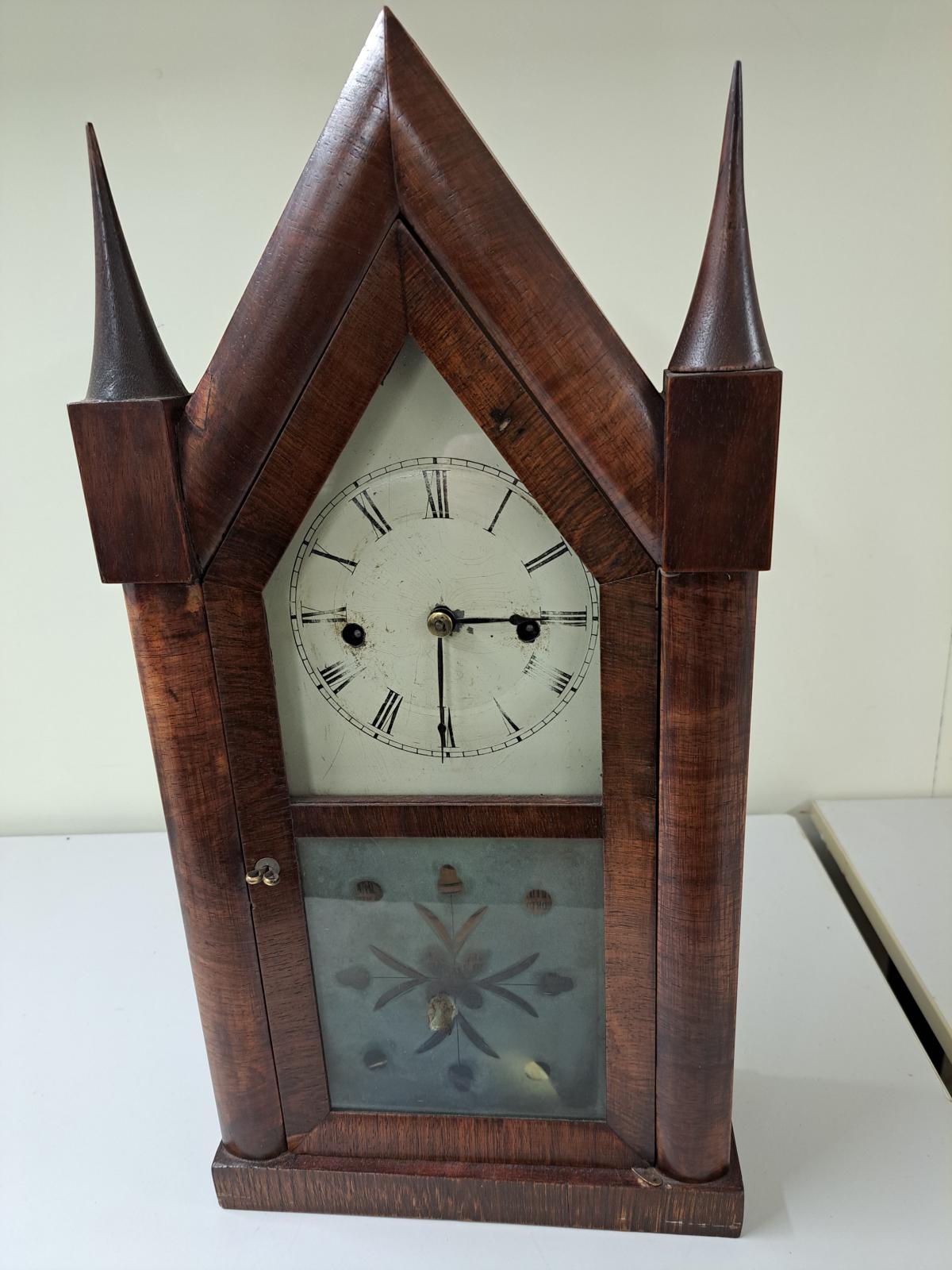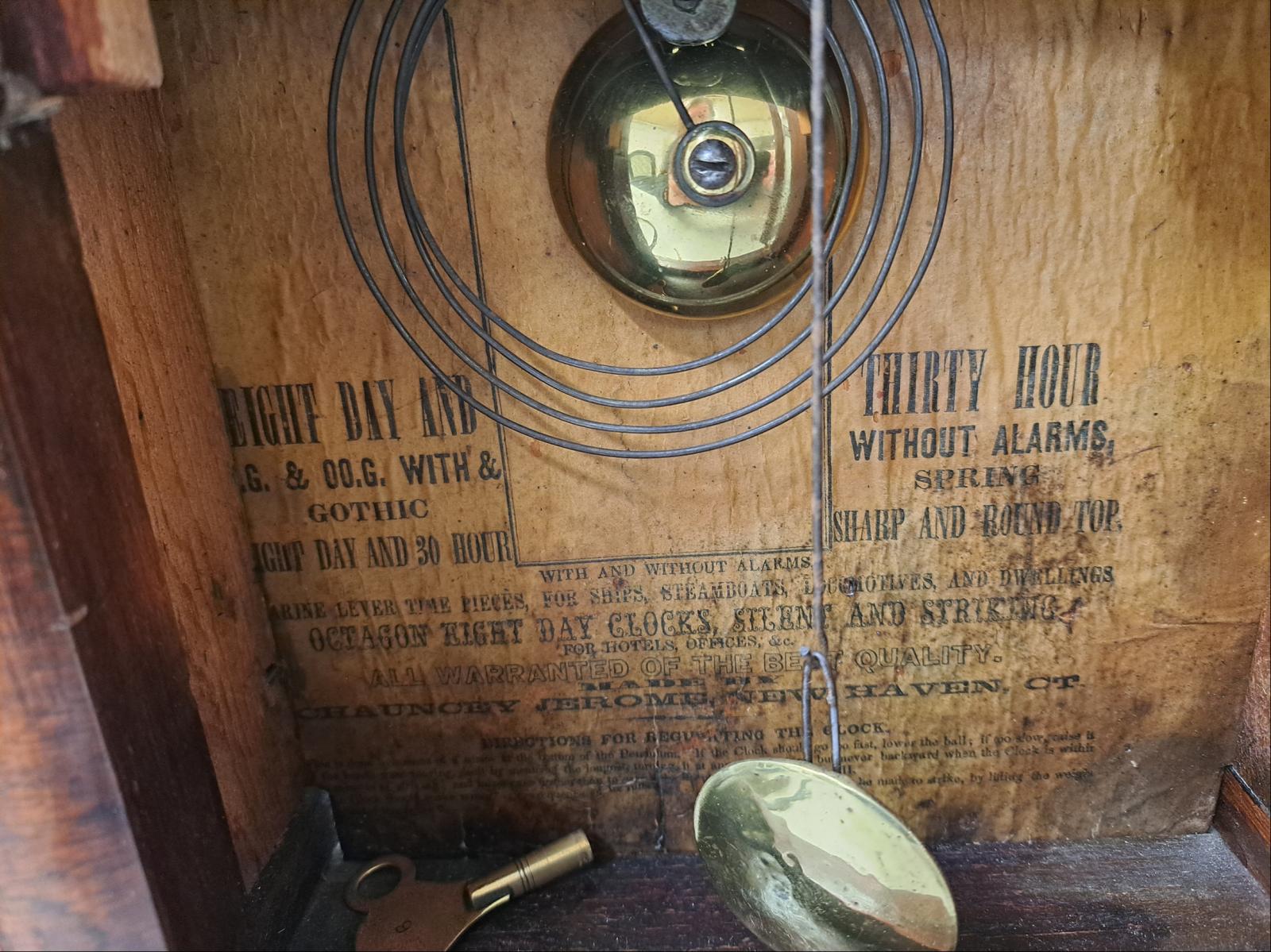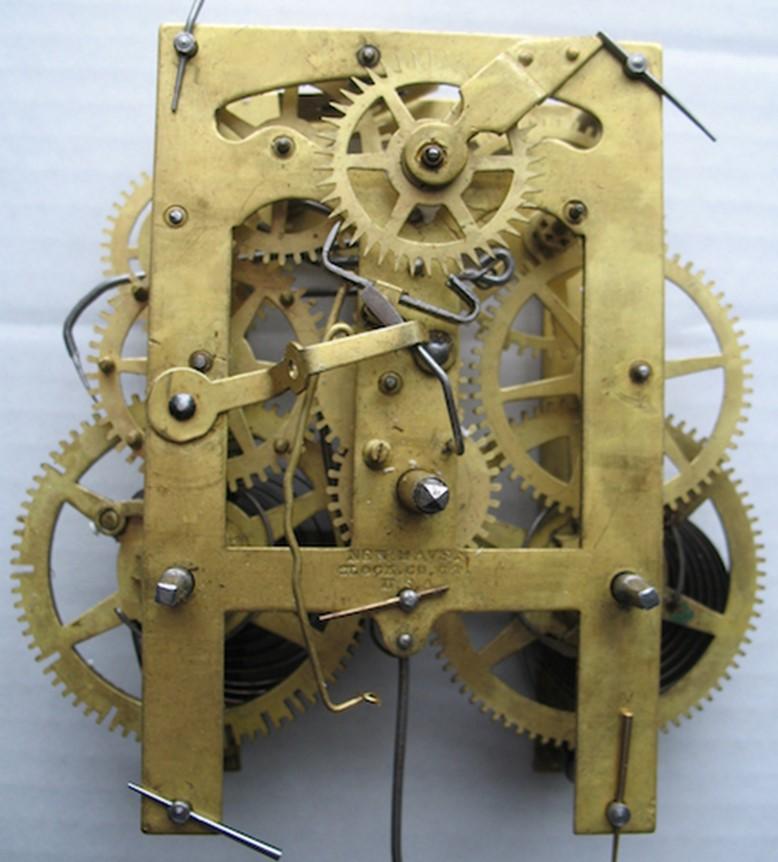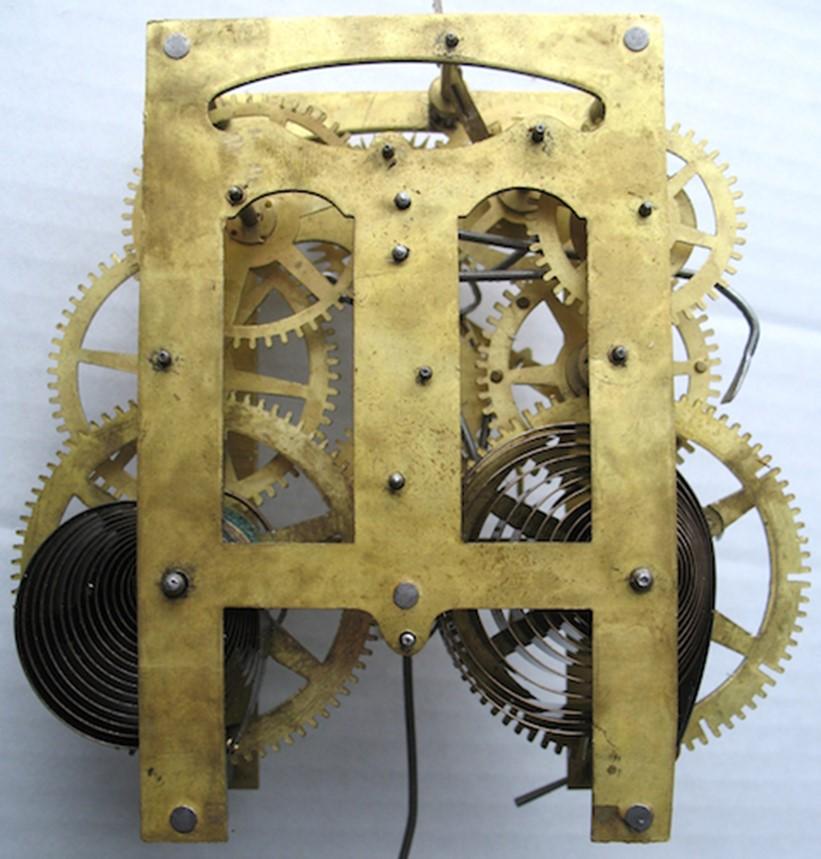Jerome Steeple Clock
c. 1940Wood with steeple spire carved design, a wood framed glass door (one half of which is decorated with a frosted glass design) encasing a metal, white faced clock with black roman numerals. Door opens to show clock mechanism and pendulum (not original).
Steeple otherwise known at the time as Sharp Gothics.
Chauncery Jerome (1793–1868) born in Canaan, Connecticut and began his career early in the 19th century in Plymouth making dials for long-case clocks. His father’s death in October 1804, forced 11-year-old Jerome to work in an apprenticeship with salesmen. He was a victim at New Haven Fort during the 1812 War between United States and Great Britain at the end of which he returned to Plymouth.
In 1816 when he began an apprenticeship with Eli Terry (the first person to make clocks by machine) learning how to make previously handmade cases using machinery. Deciding to go into business for himself, he began to make cases, trading them to Terry for wooden movements.
In 1822 Jerome moved his business to Bristol, opening a small shop with his brother Noble, producing 30-hour and eight-day wooden clocks. By 1837 Jerome's company was selling a one-day wood-cased clock for six dollars, however a year later the price had dropped down to four dollars.
In 1842 Jerome moved his clock-case manufacturing operation to St. John Street in New Haven. Three years later, following a fire (started by 2 boys playing with matches behind the factory) destroyed the Bristol plant, and Jerome relocated the entire operation to the Elm City Connecticut. The company soon became the largest industrial employer in the city, producing 150,000 clocks annually.
Because of his discovery of a method of stamping rather than using casting gears, Jerome was producing the lowest-priced clocks in the world at the time.
About this time, he decided to sell his clocks in England where American clocks had not sold well overseas because their wooden movements warped during shipping across the sea. Jerome sent a shipment of one-day clocks to England with two sales associates, who could not persuade anyone to buy the clocks. Finally, they prevailed on a storekeeper to take two. The next day, they were gone. The merchant grudgingly agreed to take four more. They too were gone in a day. He ordered 12, then 200, and Chauncey Jerome was in the export business. He sold millions of clocks world-wide, and sightings noted in far-off places including St Helena, Sandwich Islands, Egypt, and Jerusalem.
In 1850 Jerome formed the Jerome Manufacturing Co. as a joint-stock company with Benedict & Burnham, brass manufacturers of Waterbury. In 1853 the company became known as the New Haven Clock Co., producing 444,000 clocks and timepieces annually.
in 1855 he bought out a failed Bridgeport clock company controlled by P.T. Barnum, which wiped him out financially, leaving the Jerome Manufacturing Co. bankrupt. Jerome never recovered from the loss. By his own admission, he was a better inventor than businessman.
Traveling from town to town, Jerome took jobs where he could, often working for clock companies that had learned the business of clock making using Jerome's inventions. Returning to New Haven near the end of his life, he died, penniless, in 1868 at age 74.
https://en.wikipedia.org/wiki/Chauncey_Jerome
and
https://newenglandhistoricalsociety.com/rise-fall-chauncey-jerome-connecticut-clockmaker/
Details
Details
More items like this
Other items from Busselton Historical Society
- Invitation to the Driving of a Pile in the new Jetty, Busselton
- Souvenir of Busselton
- Knapton Pit Sawn Table
- Postcard - St Mary's Church Busselton. Oldest in W.A.
- Hand Cast Brass Lunch Bell from Fairlawn
- Jug and Basin Decorated with Acorns
- Silver Mug with Handle
- Sugar Basin
- Souvenir - Centenary of WA 5 Piece China Set
- Souvenir - Centenary WA 1929 Stud Box
- Souvenir - Centenary of WA Cup and Saucer
- Brass Telescope







